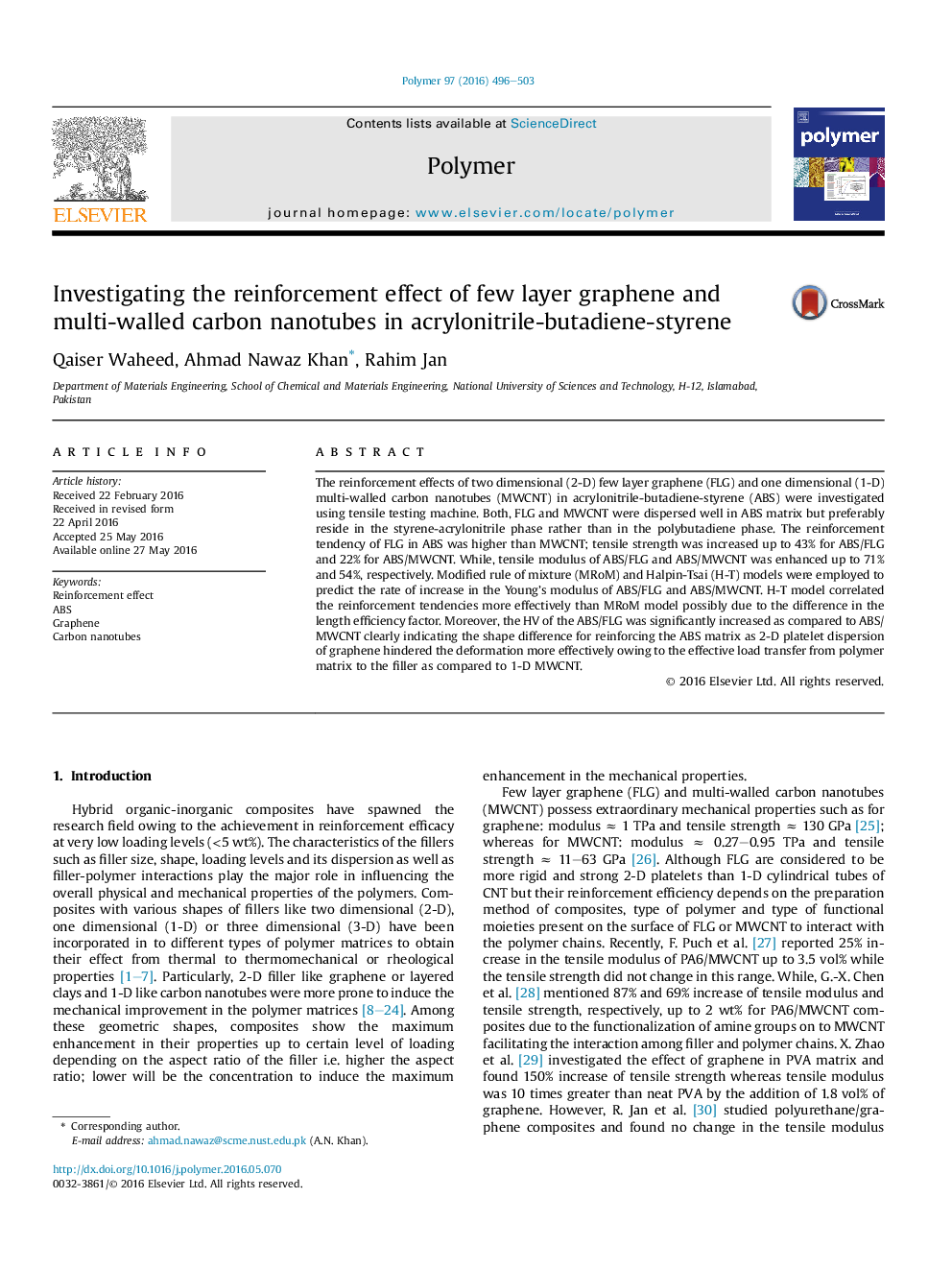| Article ID | Journal | Published Year | Pages | File Type |
|---|---|---|---|---|
| 5179265 | Polymer | 2016 | 8 Pages |
â¢The experimental trends of reinforcement of FLG and MWCNT in ABS are correlated with the theoretical predictive models.â¢Halpin-Tsai model predicts dY/dVf of ABS hybrid composites more effectively than Modified rule of mixture model (MRoM).â¢2-D sheets of graphene induce higher reinforcement effect in ABS than 1-D cylindrical carbon nanotubes.
The reinforcement effects of two dimensional (2-D) few layer graphene (FLG) and one dimensional (1-D) multi-walled carbon nanotubes (MWCNT) in acrylonitrile-butadiene-styrene (ABS) were investigated using tensile testing machine. Both, FLG and MWCNT were dispersed well in ABS matrix but preferably reside in the styrene-acrylonitrile phase rather than in the polybutadiene phase. The reinforcement tendency of FLG in ABS was higher than MWCNT; tensile strength was increased up to 43% for ABS/FLG and 22% for ABS/MWCNT. While, tensile modulus of ABS/FLG and ABS/MWCNT was enhanced up to 71% and 54%, respectively. Modified rule of mixture (MRoM) and Halpin-Tsai (H-T) models were employed to predict the rate of increase in the Young's modulus of ABS/FLG and ABS/MWCNT. H-T model correlated the reinforcement tendencies more effectively than MRoM model possibly due to the difference in the length efficiency factor. Moreover, the HV of the ABS/FLG was significantly increased as compared to ABS/MWCNT clearly indicating the shape difference for reinforcing the ABS matrix as 2-D platelet dispersion of graphene hindered the deformation more effectively owing to the effective load transfer from polymer matrix to the filler as compared to 1-D MWCNT.
Graphical abstractDownload high-res image (201KB)Download full-size image
